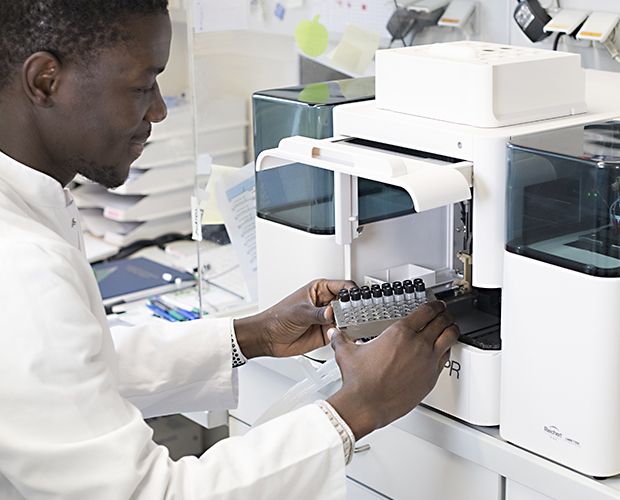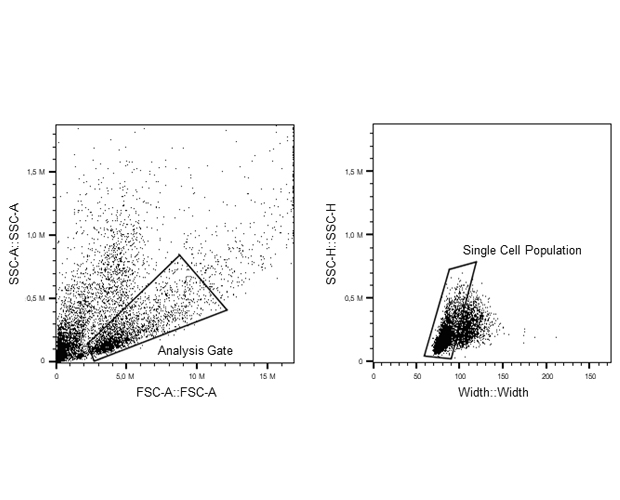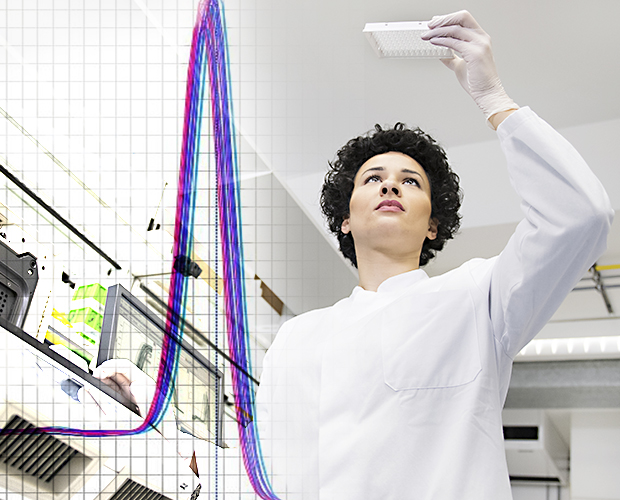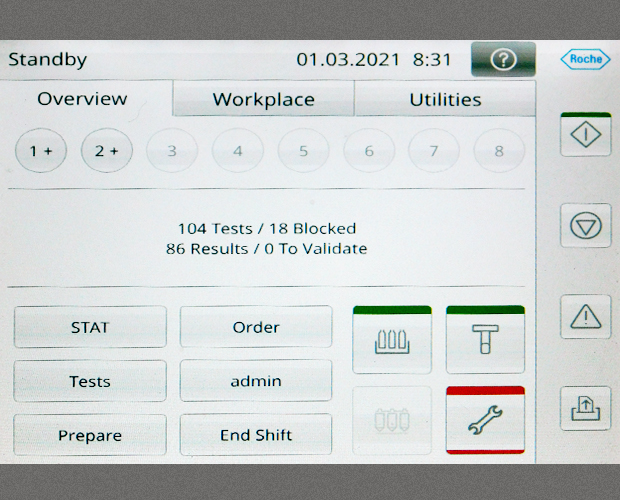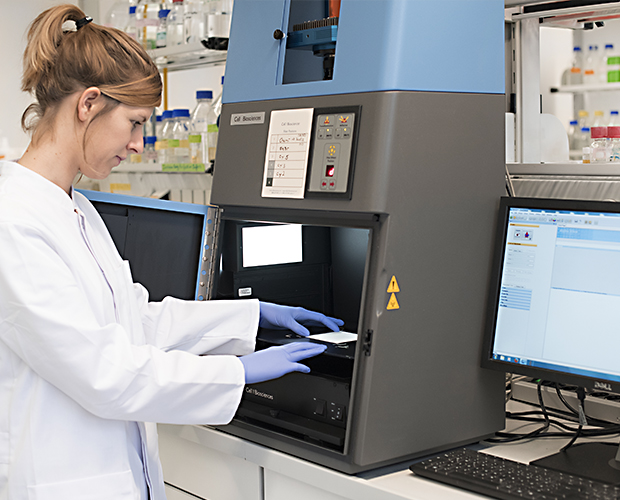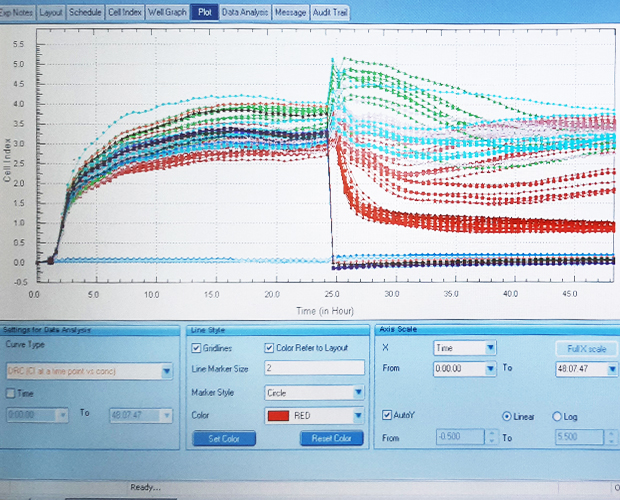We analyze your target cells or culture supernatants using both invasive and non-invasive methods.
This provides information, for example, on cell viability, the formation of defined surface molecules, gene expression, cell metabolism or protein secretion. In addition, we can determine the changes in some parameters over a defined time course.
